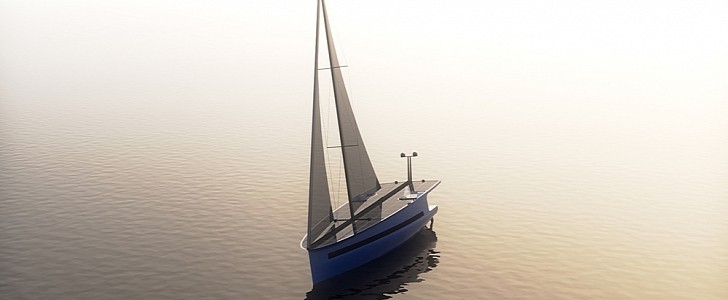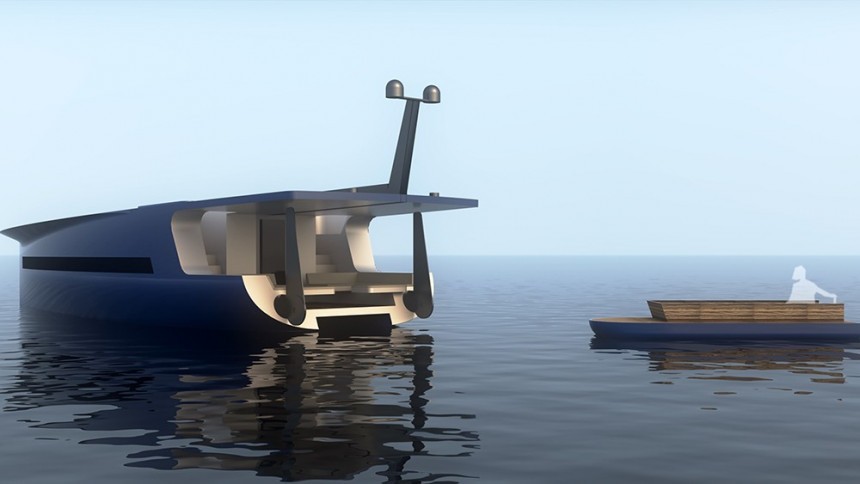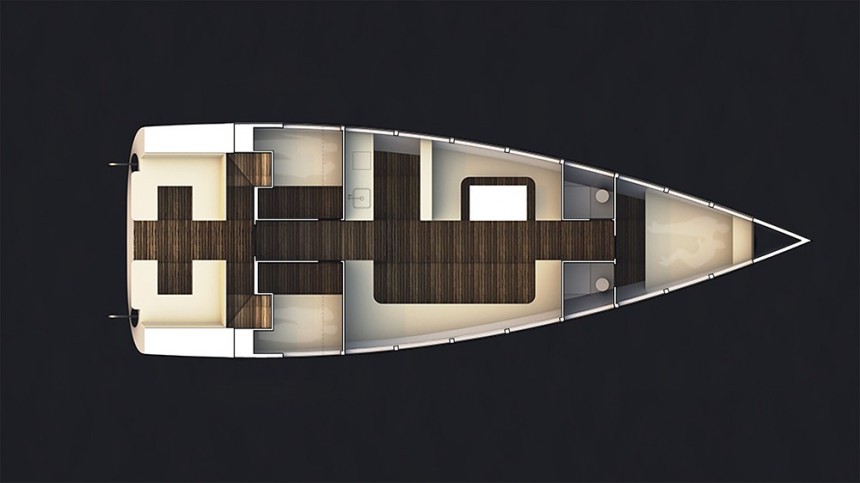Electrification is slower in reaching the naval industry, due to constraints that have to do with range and the size of the vessels. But it’s coming, make no doubt about it.
There are clear disadvantages to relying solely on solar or wind power with any naval design. The larger the boat, the bigger the surface of the solar panels – and let’s not even get into how it would have to sail in optimal weather conditions in order to not run out of juice in the middle of nowhere.
Wind power poses similar challenges: among other things, nature is fickle and you can’t count on a natural phenomenon to last for ever or, for that matter, count on it being completely predictable to suit your purposes. However, by combining these two, you could get a smaller size yacht that would be self-sufficient and 100 percent green, as it would emit no noise or emissions.
P1 is one such yacht. It’s just a concept for the time being, and it’s a study in how these two types of energy can be used for long-range travels, while delivering a rather elegant, albeit minimalist, vessel.
Designed by Pedro Ramalho, the founder of Parq Architects, P1 is both solar- and wind-powered and, despite its small size, quite comfortably fitted. At 55 feet (17 meters), it would make for an ideal vessel for a family or small group of friends looking for adventures at sea without the guilty conscience that comes with sailing a diesel boat.
P1 has no exterior deck to speak of, for use of the passengers. Instead, it’s covered in 60 square meters (646 square feet) of solar panels, which would be enough to generate up to 15kW of electrical energy from the sun. This would allow for port and coastal navigation with zero emissions, or could serve as backup to the traditional sailing rig.
Indeed, P1 has a sailing rig as well, though you might not see it at first sight. Because you can’t have sails covering the photovoltaic cells (what would their point be if there was something obscuring the sun?), Ramalho envisioned a collapsible sailing rig. There is a retractable mast, keel and rudder which act as an articulated triangle with a sliding vertex, the sails themselves, which unwind from inside the mast. When not in use, the entire rig folds away and collapses, allowing the solar panels to do their job.
Under the deck, there is enough room for three cabins and one common area, which can be outfitted as an open-plan kitchen and dining room. This is not your millionaire’s yacht, to be sure, but based on the renders made available online, it’s more than enough to provide comfortable accommodations to a handful of people.
Ramalho even imagined a dinghy, which slides out from the hull and can serve as a dinghy (duh), hauling provisions or ferrying guests, or as a deck extension, in which case it would double as a sundeck. Speaking of sunning on the deck, it’s still possible, though on a much smaller portion of the deck. The renders show two pits on each side of P1: these could serve for control or to accommodate sun loungers. Or both.
“With all the free and sustainable energy that is available at sea, there is really no need to be dependent on dirty energy. You just need to build more efficient vessels,” Ramalho tells the Robb Report about P1.
In theory, P1 would use solar energy for short-range travels (like the aforementioned coastal and port navigation) and wind power to attain global range. Working together, the two systems would definitely improve a vessel’s range and performance, and help it do its part in terms of cutting down emissions generated by the industry.
Wind power poses similar challenges: among other things, nature is fickle and you can’t count on a natural phenomenon to last for ever or, for that matter, count on it being completely predictable to suit your purposes. However, by combining these two, you could get a smaller size yacht that would be self-sufficient and 100 percent green, as it would emit no noise or emissions.
P1 is one such yacht. It’s just a concept for the time being, and it’s a study in how these two types of energy can be used for long-range travels, while delivering a rather elegant, albeit minimalist, vessel.
Designed by Pedro Ramalho, the founder of Parq Architects, P1 is both solar- and wind-powered and, despite its small size, quite comfortably fitted. At 55 feet (17 meters), it would make for an ideal vessel for a family or small group of friends looking for adventures at sea without the guilty conscience that comes with sailing a diesel boat.
Indeed, P1 has a sailing rig as well, though you might not see it at first sight. Because you can’t have sails covering the photovoltaic cells (what would their point be if there was something obscuring the sun?), Ramalho envisioned a collapsible sailing rig. There is a retractable mast, keel and rudder which act as an articulated triangle with a sliding vertex, the sails themselves, which unwind from inside the mast. When not in use, the entire rig folds away and collapses, allowing the solar panels to do their job.
Under the deck, there is enough room for three cabins and one common area, which can be outfitted as an open-plan kitchen and dining room. This is not your millionaire’s yacht, to be sure, but based on the renders made available online, it’s more than enough to provide comfortable accommodations to a handful of people.
“With all the free and sustainable energy that is available at sea, there is really no need to be dependent on dirty energy. You just need to build more efficient vessels,” Ramalho tells the Robb Report about P1.
In theory, P1 would use solar energy for short-range travels (like the aforementioned coastal and port navigation) and wind power to attain global range. Working together, the two systems would definitely improve a vessel’s range and performance, and help it do its part in terms of cutting down emissions generated by the industry.









